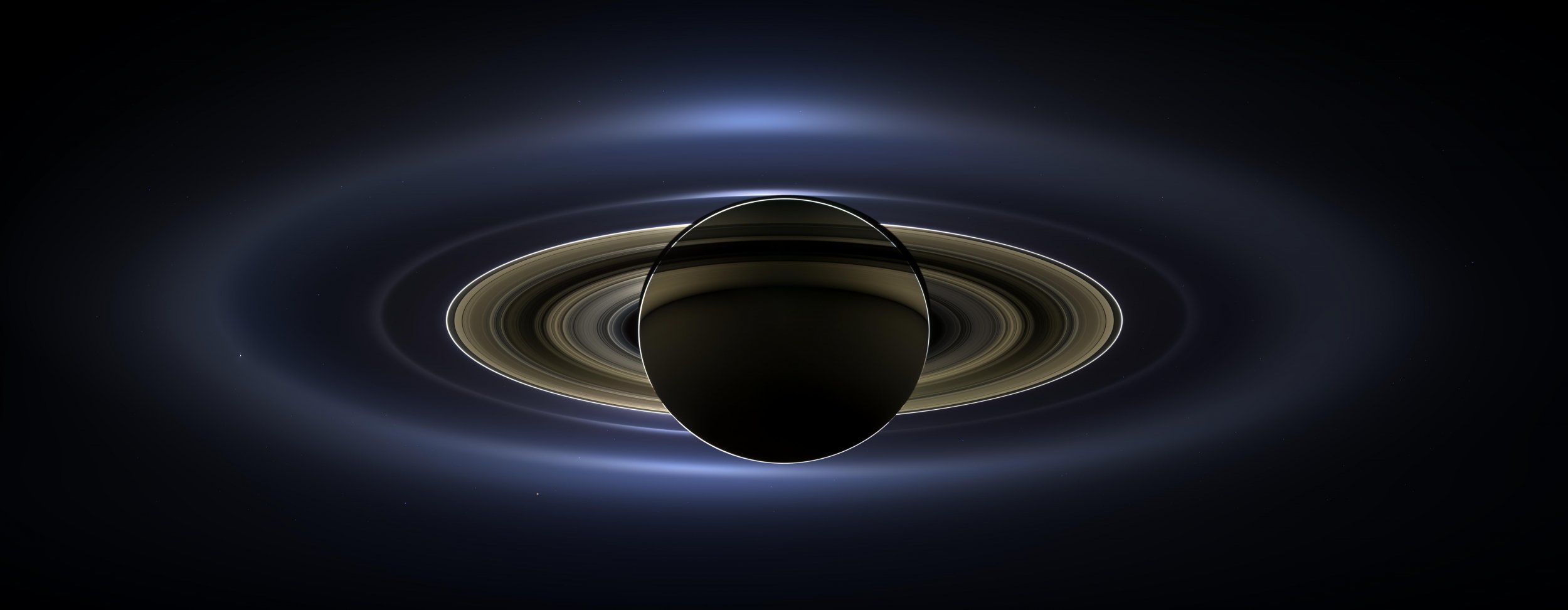
How Saturn's rings came to be was one of the big puzzles scientists wanted to crack with the Cassini mission, the spacecraft that destroyed itself this past September. And just three months after its demise, researchers say they're more confident than ever that the rings are the crushed-up remains of an ill-fated moon.
The theory is based on some of the very last data Cassini gathered, and was presented at last week's annual conference of the American Geophysical Union and reported by Science News.
For Saturn's rings, age and mass are closely linked: If they're smaller and less massive, they must be younger, because scientists know they would not have been able to survive a fierce pounding from debris billions of years ago, or at least not in their current form. So in order for them to be older, dating to around the same time Saturn itself was formed, they'd have to be larger.
But needless to say, it's a bit difficult for scientists to put the rings on a scale. That's why Cassini's last days were so crucial: The spacecraft danced its way through 22 loops between the rings and the planet itself. That meant scientists could compare the gravitational tug of the planet itself with that of the planet plus its rings—a roundabout way of calculating the mass of the rings themselves.
According to Science News, that analysis suggested that the rings fall on the lighter side: perhaps about 40 billion billion pounds (ok, it's all relative). There are still some mysteries in the numbers Cassini sent back to Earth, so that could be about a quarter of the real mass, tops. But either way, the rings are much too small to be very old.
Read more: Saturn Has 'Kittens' in Its Ring and They Could Teach Us How Planets Form
And those results are underscored by analysis of the rings, themselves. They are constantly bombarded by a stream of debris, from meteors to tiny particles of dust, which should darken them over time. But according to other new Cassini analysis also presented at last week's conference, Saturn's rings are still shiny and new.
That makes scientists think the rings may be the remains of a moon that Saturn's enormous gravity ensnared about 200 million years ago and then shredded into the tiny, shiny bits.
Uncommon Knowledge
Newsweek is committed to challenging conventional wisdom and finding connections in the search for common ground.
Newsweek is committed to challenging conventional wisdom and finding connections in the search for common ground.
About the writer
Meghan Bartels is a science journalist based in New York City who covers the science happening on the surface of ... Read more
To read how Newsweek uses AI as a newsroom tool, Click here.





